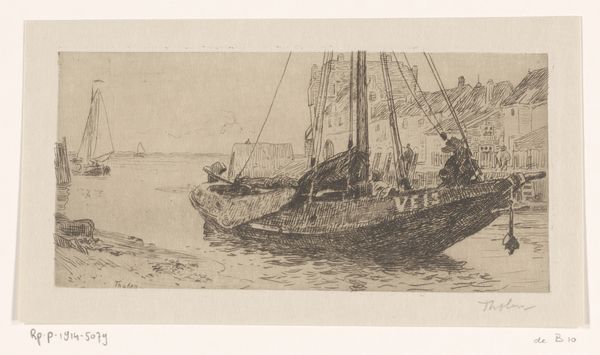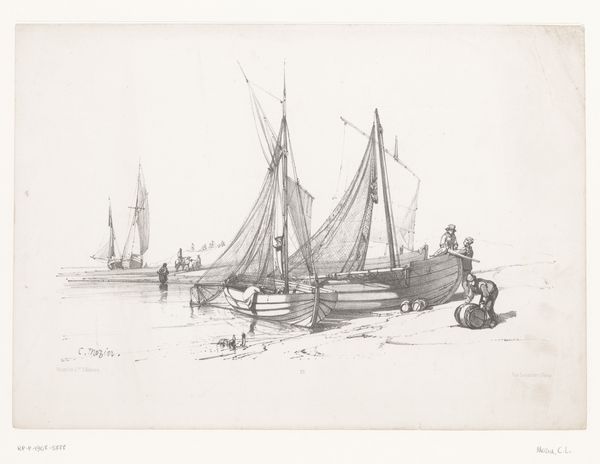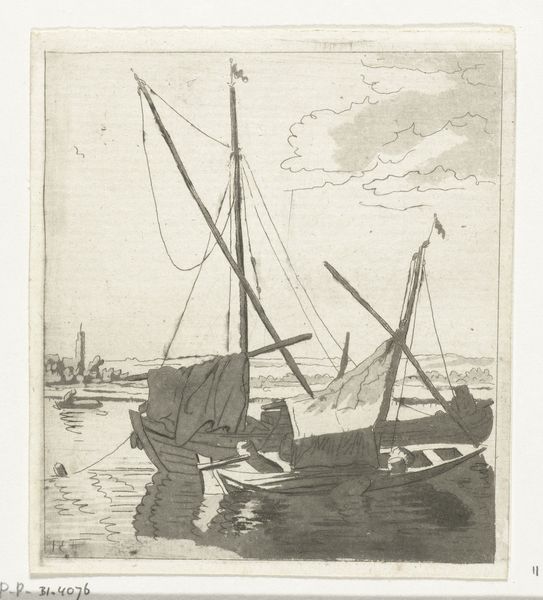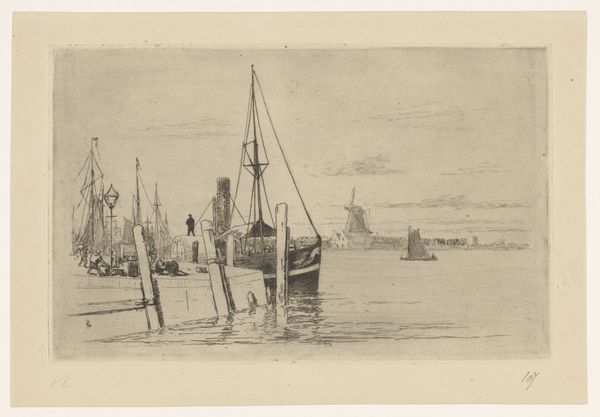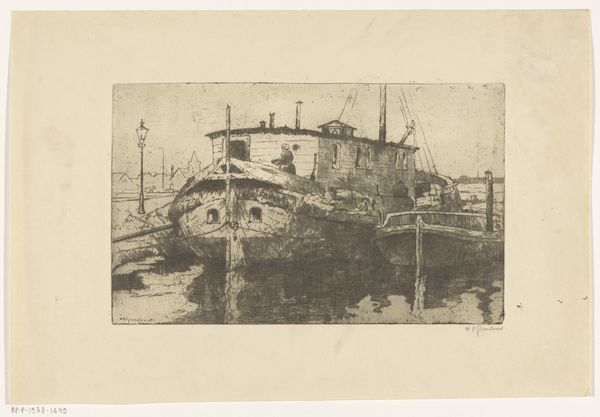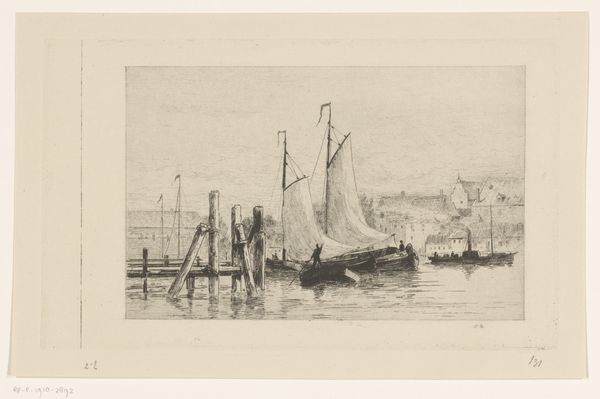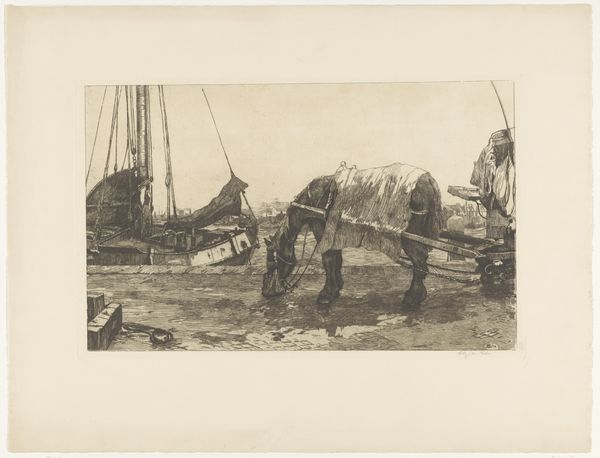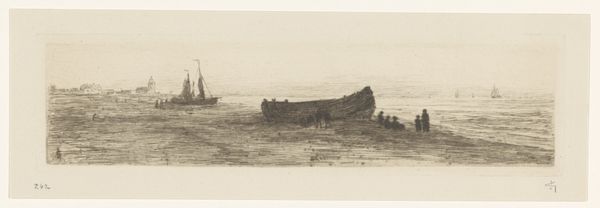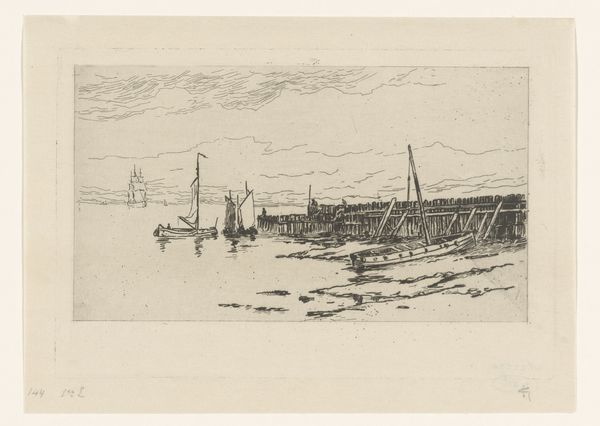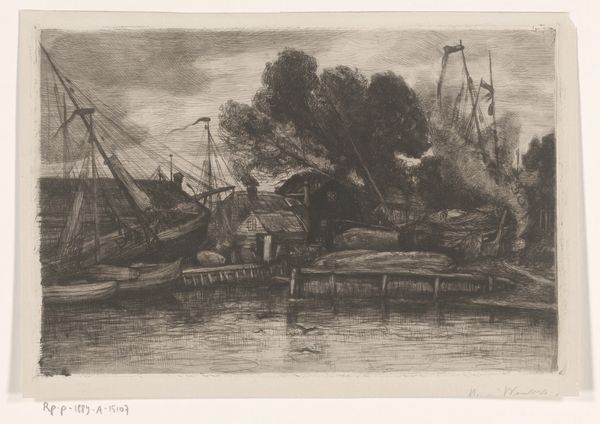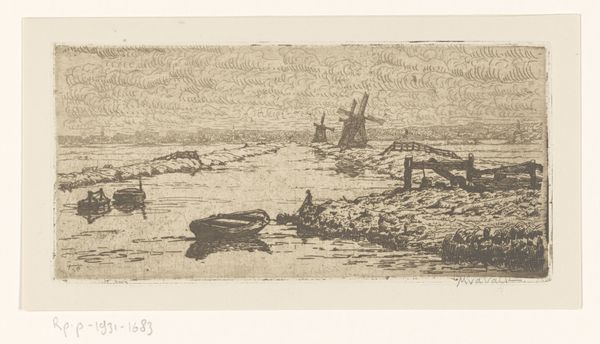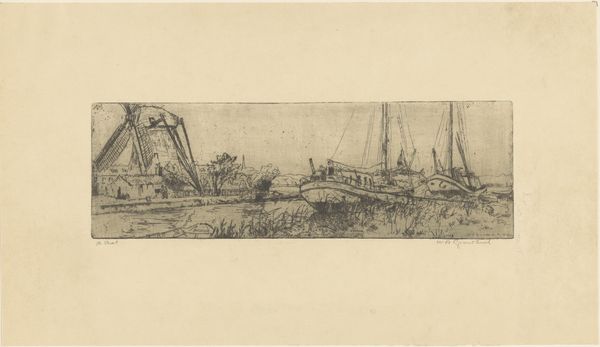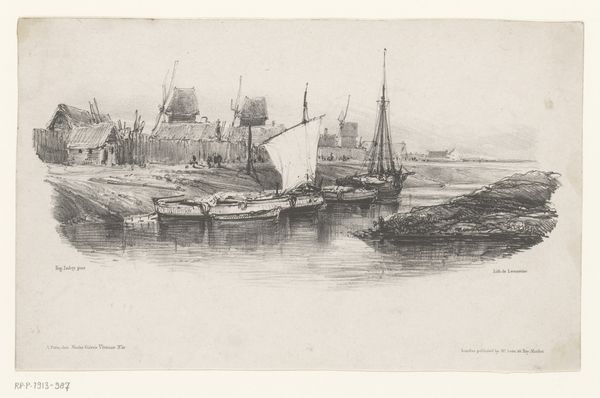
drawing, print, etching
#
drawing
# print
#
etching
#
landscape
#
line
#
cityscape
#
realism
Dimensions: height 227 mm, width 535 mm
Copyright: Rijks Museum: Open Domain
Editor: This is "Aangemeerde tjalk," an etching by Maurits van der Valk, dating sometime between 1867 and 1931. The texture created by the etching makes the boat seem old, used, like it’s seen better days. What do you make of it? Curator: As a materialist, my eye immediately goes to the etching process itself. The lines, the ink, the paper - these were the direct result of labor. How long did this process take van der Valk? Where did he source his materials? Was he directly involved with each stage? Editor: That's a side of art I often overlook. Curator: And think about the boat itself. It is not simply a boat, it’s a tool, something produced by human hands, an object with immense social and economic weight within the Dutch landscape. The materials – the wood, the ropes – each have their own story, their own history of extraction and processing. Editor: I see, it’s all about the object's life and labour surrounding the process of creating that. Curator: Precisely. Look closely. What does the state of the boat suggest to you about its economic purpose, or perhaps the community it served? Editor: Well, given the somewhat worn appearance, maybe the owner couldn’t afford extensive upkeep, placing him or her within a specific socio-economic class? Curator: Indeed! And what of our own consumption when encountering this art? Does simply appreciating the aesthetic beauty absolve us from thinking critically about the human endeavour required to make it, and by whom, and for whom? Editor: This makes me want to learn more about the boats used in the Netherlands at that time. Thanks, I have a lot to think about! Curator: My pleasure! It's all about viewing art as more than just an image, but an end result within complex material and labour relationships.
Comments
No comments
Be the first to comment and join the conversation on the ultimate creative platform.
